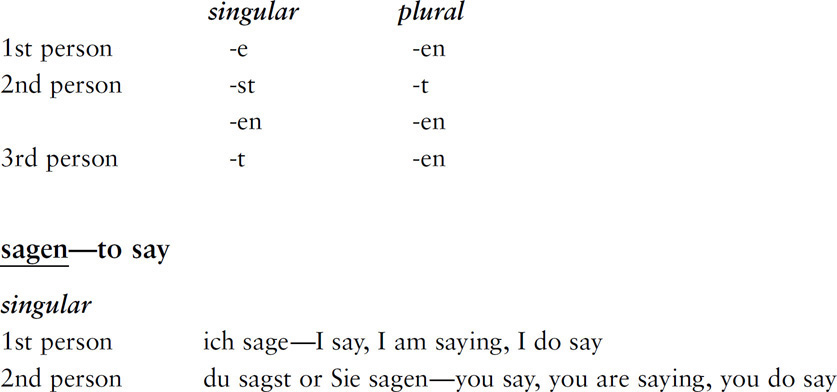Copyright 2017 by McGraw-Hill Education. All rights reserved. Except as permitted under the United States Copyright Act of 1976, no part of this publication may be reproduced or distributed in any form or by any means, or stored in a database or retrieval system, without the prior written permission of the publisher. ISBN: 978-1-26-001061-9
MHID: 1-26-001061-9. The material in this eBook also appears in the print version of this title: ISBN: 978-1-26-001060-2, MHID: 1-26-001060-0. eBook conversion by codeMantra
Version 1.0 All trademarks are trademarks of their respective owners.
Rather than put a trademark symbol after every occurrence of a trademarked name, we use names in an editorial fashion only, and to the benefit of the trademark owner, with no intention of infringement of the trademark. Where such designations appear in this book, they have been printed with initial caps. McGraw-Hill Education eBooks are available at special quantity discounts to use as premiums and sales promotions or for use in corporate training programs. To contact a representative, please visit the Contact Us page at www.mhprofessional.com. McGraw-Hill Education Language Lab App Review quizzes, flash cards, and a digital glossary are all available to support your study of this book. Go to www.mhlanguagelab.com to access the online version of the application, or to locate links to the mobile app for iOS and Android devices.
More details about the features of the app are available on the inside front cover. TERMS OF USE This is a copyrighted work and McGraw-Hill Education and its licensors reserve all rights in and to the work. Use of this work is subject to these terms. Except as permitted under the Copyright Act of 1976 and the right to store and retrieve one copy of the work, you may not decompile, disassemble, reverse engineer, reproduce, modify, create derivative works based upon, transmit, distribute, disseminate, sell, publish or sublicense the work or any part of it without McGraw-Hill Educations prior consent. You may use the work for your own noncommercial and personal use; any other use of the work is strictly prohibited. Your right to use the work may be terminated if you fail to comply with these terms.
THE WORK IS PROVIDED AS IS. McGRAW-HILL EDUCATION AND ITS LICENSORS MAKE NO GUARANTEES OR WARRANTIES AS TO THE ACCURACY, ADEQUACY OR COMPLETENESS OF OR RESULTS TO BE OBTAINED FROM USING THE WORK, INCLUDING ANY INFORMATION THAT CAN BE ACCESSED THROUGH THE WORK VIA HYPERLINK OR OTHERWISE, AND EXPRESSLY DISCLAIM ANY WARRANTY, EXPRESS OR IMPLIED, INCLUDING BUT NOT LIMITED TO IMPLIED WARRANTIES OF MERCHANTABILITY OR FITNESS FOR A PARTICULAR PURPOSE. McGraw-Hill Education and its licensors do not warrant or guarantee that the functions contained in the work will meet your requirements or that its operation will be uninterrupted or error free. Neither McGraw-Hill Education nor its licensors shall be liable to you or anyone else for any inaccuracy, error or omission, regardless of cause, in the work or for any damages resulting therefrom. McGraw-Hill Education has no responsibility for the content of any information accessed through the work. Under no circumstances shall McGraw-Hill Education and/or its licensors be liable for any indirect, incidental, special, punitive, consequential or similar damages that result from the use of or inability to use the work, even if any of them has been advised of the possibility of such damages.
This limitation of liability shall apply to any claim or cause whatsoever whether such claim or cause arises in contract, tort or otherwise.
Contents
Introduction
Practice is an indispensable element of mastery in foreign language learning, as it is in other subject areas.
German Verb Drills is an excellent supplement to basic classroom texts and is particularly valuable as a tool for individualized instruction and practice. In a clear and concise way this book leads students to an understanding of how German verbs are formed and used. A variety of drills reinforces the ability to manipulate the language in its written form, and many of the exercises can be easily converted to oral drills, thereby adding another dimension to practice. Students use the verbs in context, and the emphasis is upon contemporary, colloquial use of the language.
Answers for all the exercises are provided in the Answer Key. German Verb Drills is composed of five parts and follows the normal progression of most basic texts, beginning with the present tense of regular and irregular verbs and ending with a study of the subjunctive mood. Review exercises are placed at the end of each part, and a German-English/English-German index of verbs is provided at the end of the book. For this latest edition, a helpful complement to this book is provided in the McGraw-Hill Education Language Lab app, available online and as a free mobile app. All verb lists that appear throughout this book are presented in flashcard format, providing a convenient means to memorization. The two verb indices are also included in a handy auto-fill glossary for quick reference.
And for additional review, numerous interactive quizzes allow for helpful review on-the-go. This book and its supporting digital resources should be an invaluable aid for students wishing to advance more quickly in their study of German, as well as for those who need additional understanding and practice for mastering classroom assignments.
Part 1
The Present Tense of Regular, Irregular, and Modal Verbs
1 Infinitive
Most German verbs have their infinitives ending in -
en.

The stem of the verb is found by dropping the infinitive ending -
en. The stem of
sagen would therefore be
sag- and the stem of
gehen, geh-.

 Du, ihr
Du, ihr, and
Sie all mean
you.

 Du, ihr
Du, ihr, and
Sie all mean
you.
The familiar form du (singular) is used in speaking to a child, relative, or close friend; ihr (plural) is used in speaking to several children, relatives, or close friends; Sie (singular and plural) is used in speaking to one or several adults other than those listed above.  The indefinite pronoun man may be translated one, we, they, you, or people. It is used quite frequently in German speech.
The indefinite pronoun man may be translated one, we, they, you, or people. It is used quite frequently in German speech.  There are no progressive forms (am, are, or is followed by the present participle ending -ing
There are no progressive forms (am, are, or is followed by the present participle ending -ing





 The stem of the verb is found by dropping the infinitive ending -en. The stem of sagen would therefore be sag- and the stem of gehen, geh-.
The stem of the verb is found by dropping the infinitive ending -en. The stem of sagen would therefore be sag- and the stem of gehen, geh-. 
 Du, ihr, and Sie all mean you.
Du, ihr, and Sie all mean you.  The indefinite pronoun man may be translated one, we, they, you, or people. It is used quite frequently in German speech.
The indefinite pronoun man may be translated one, we, they, you, or people. It is used quite frequently in German speech.  There are no progressive forms (am, are, or is followed by the present participle ending -ing
There are no progressive forms (am, are, or is followed by the present participle ending -ing